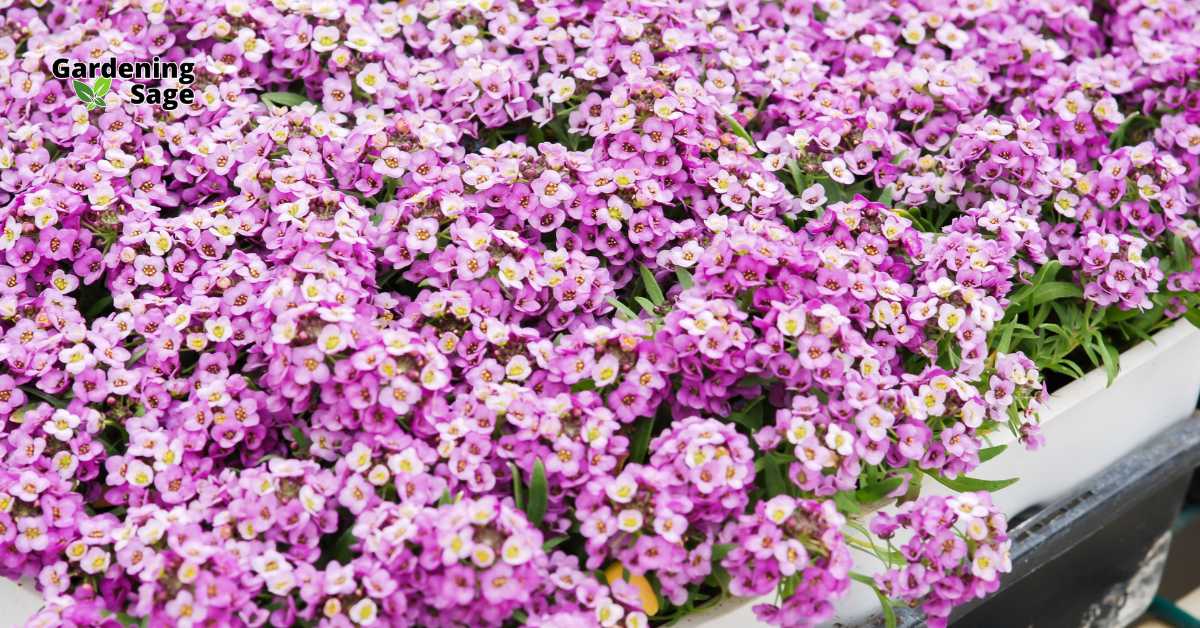Alyssum, known for its charming and fragrant flowers, is a treasure in any garden. This guide delves into the secrets of growing alyssum, from selecting the right variety to ensuring a vibrant, long-lasting bloom.
Whether you’re a seasoned gardener or a beginner, these tips will help you create a stunning display of Alyssum’s delicate beauty.
Understanding Alyssum: A Gardener’s Delight
Alyssum, part of the Brassicaceae family, is celebrated for its carpet of tiny, honey-scented flowers. These low-growing plants are perfect for borders, rock gardens, and containers.
Alyssum comes in shades of white, pink, purple, and yellow, adding a subtle yet captivating allure to any garden setting. They are also known for their ability to attract beneficial insects, such as bees and butterflies, contributing to the overall health of the garden.
Choosing the Right Alyssum Variety
There are several varieties of alyssum to choose from, each with its unique charm. ‘Carpet of Snow’ is a popular choice for its pristine white blooms, while ‘Royal Carpet’ offers shades of violet.
Consider the color scheme of your garden and the growth habits of each variety – some spread wider, while others have a more compact form.
Planting and Site Selection
Alyssum thrives in well-drained soil with moderate fertility. They prefer full sun but can tolerate partial shade, especially in hotter climates.
When planting alyssum, consider its use as a ground cover or a complement to other plants in containers. Space the plants 6-8 inches apart to allow for proper growth and air circulation.
Caring for Your Alyssum Plants
- Watering: Alyssum likes evenly moist soil but can tolerate short periods of drought. Water the plants regularly, especially during dry spells, to keep the soil consistently moist but not waterlogged.
- Feeding: While alyssum isn’t a heavy feeder, a light application of a balanced, slow-release fertilizer at the beginning of the growing season can encourage vigorous growth and bloom.
- Pruning and Deadheading: Regular pruning and deadheading of spent flowers not only keep your alyssum plants looking tidy but also encourage more blooms. Gently shear the plants back by a third after the first flush of flowers to promote a second bloom.
- Pest and Disease Management: Alyssum is generally resistant to pests and diseases. However, watch out for common issues like aphids and powdery mildew. If pests are detected, use organic insecticidal soaps or introduce natural predators like ladybugs.
Creating Stunning Alyssum Displays
Alyssum’s versatility makes it ideal for various garden designs. Use it as a border plant, in hanging baskets, or as a filler in garden beds. Its cascading habit is perfect for softening edges and adding texture.
For a dramatic effect, plant alyssum in large groups or combine it with other annuals and perennials for a multi-colored display.
The Benefits of Growing Alyssum
Aside from its beauty, alyssum offers ecological benefits. It’s a fantastic plant for attracting pollinators and contributing to the health of your garden and the environment.
Additionally, its pleasant fragrance adds another layer of enjoyment, making your garden a sensory delight.
Guiding to a Blooming Marvel
Alyssum’s allure lies in its simplicity and charm.
By following these steps, you can easily integrate this delightful plant into your garden, creating a tapestry of color and fragrance.
Embrace the joy of gardening with Alyssum and watch as your garden transforms into a blooming marvel.














